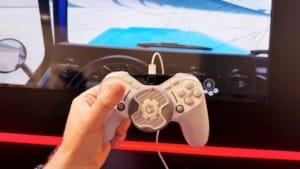Writer unveils revolutionary Palmyra-Vision: Text generation from images
Unveiling Writer's Palmyra-Vision, a groundbreaking AI technology transforming images into text, shaping the future of content creation.

In a world where technology ceaselessly evolves, Writer, a forward-thinking startup based in San Francisco, is pushing the boundaries of generative AI with its latest offering: Palmyra-Vision. This innovative feature within their Palmyra model is designed to translate images into descriptive text, including the intricate details of charts and graphs, marking a significant milestone in AI-driven content creation.
Table Of Content
A strategic focus on multimodal content
The co-founder and CEO of Writer, May Habib, emphasises the company’s dedication to multimodal content, which forms the backbone of their strategy. In a recent conversation with TechCrunch, Habib elucidated their vision, “Our focus is on embracing multimodal inputs while specialising in text outputs, aiming to provide text generation and insights through written content.” This strategy is vividly demonstrated in Palmyra-Vision, which is a leap towards integrating different forms of media inputs and translating them into textual output.
Currently, the company focuses on analysing and interpreting images to generate text rather than producing images. Although the prospect of creating charts and graphs from data is on the horizon, the current priority remains to convert existing images into text, a task that Palmyra-Vision accomplishes with remarkable finesse.

The intricate workings of Palmyra-Vision
Palmyra-Vision operates using a sophisticated multi-model approach. This involves a series of specialised models, each with a unique function, collaboratively working to identify and interpret the contents of an image. Subsequently, these models convert the visual data into text with extraordinary accuracy, reportedly achieving a 99.99% success rate, as highlighted by Habib.
The practical applications of this technology are vast and varied. For instance, it can revolutionise how e-commerce platforms update their websites. They can now automatically generate textual descriptions for new products based on images, eliminating the need for manual updates. Palmyra-Vision could be a game-changer for ensuring compliance with FDA regulations, automatically checking ad copy against relevant documents in the pharmaceutical industry. Moreover, the technology extends to converting handwritten notes into digital text, though this requires tailoring the model to specific sectors such as healthcare or insurance to maintain high accuracy levels.
Human review: An essential component
Despite the advanced capabilities of Palmyra-Vision, Habib highlights the critical role of human intervention in the workflow. “No matter how advanced our tools are, the necessity of human review cannot be overstated. It’s essential for validating the accuracy and preventing any potential misinterpretations or errors,” she advises. Writer is actively developing more automated workflows to ensure this level of scrutiny is consistently applied across all customer interactions.
To date, Writer has successfully raised $126 million, as reported by Crunchbase, with a notable $100 million Series B funding round led by Iconiq in September last year. The company is currently in talks with leading cloud infrastructure platforms, aiming to scale its operations and broaden its market reach.
With its latest image-to-text capabilities, Palmyra is now available, representing a significant advancement in generative AI and multimodal content creation.













